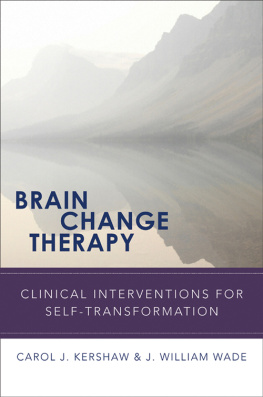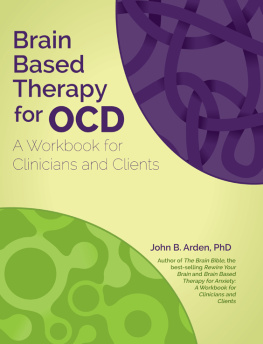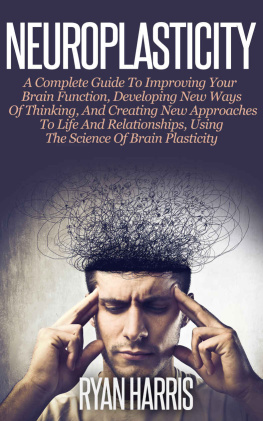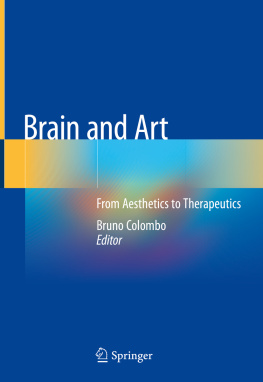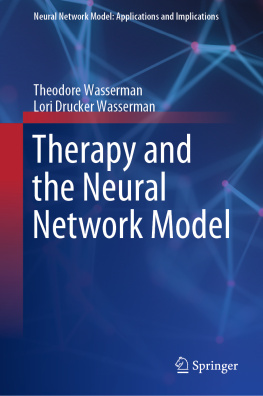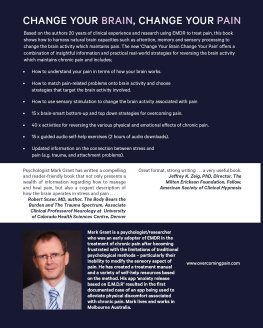To create a book always takes a team effort, and there are many people who have contributed to the completion of this project. We would like to thank W.W. Nortons chief editor, Deborah Malmud, for her vision and patience, without which we could not have completed this book. Suzanne Elusorr has been a wonderful editor who played a major role in making this project a reality, and we value her friendship as well. We also want to thank Margaret Ryan for her detailed copyediting, which created a clear and accurate manuscript.
To our students and clients we owe a debt of gratitude. They taught us that people have amazing abilities for change. They helped us take theory and make it both practical and personal.
We owe much to our mentors and colleagues. Among those are Milton Erickson, Carl Whitaker, Steve Lankton, Roxanna Erickson-Klein, Jeff Zeig, Betty Alice Erickson, and our dear friends in Group 17 who helped keep us emotionally honest, connected, and feeling personally supported.
Thanks go to our three children, Chris, Stephen, and Tiffany, who taught us that parenting, like therapy, requires connection, creativity, humor, humility, and the steadfast belief that people can reach their potential.
Early in life we all learn that there are important differences between thoughts, words, and deeds. As very small children, we quickly realize that our thoughts are our own private business; that our words can get us into trouble (and sometimes get us out of it) but that, in and of themselves, they dont do anything; and that deeds, such as hitting a little brother, have definite consequences. However, contemporary brain research has found that, at the level of the brain, thoughts, words, and deeds are all neurochemical acts. This extraordinary organ, which has no moving parts, registers electrochemical activity with every thought that we ever have, either awake or in sleep; with every word uttered aloud, even in the softest whisper; and with every movement of even the smallest muscle. And contrary to what we learned as children, it may be that the brains activity creates an electromagnetic field that overlaps, and may be perceived by, other people around us: That is, although the content of our thoughts may be private, empathic attunement may allow others to sense our state (Cozolino, 2002; McFadden, 2002).
Brain Change Therapy (BCT) is a therapeutic approach using brainmind state change as a focus of treatment. Ultimately, all types of psychotherapyfrom psychoanalysis to behavioral interventionare successful to the extent to which they enhance change in relevant neural circuits (Cozolino, 2002). BCT starts with that working assumption: Effective therapeutic change must inevitably include a repatterning of neural pathways. It utilizes cognitive, affective, behavioral, and interpersonal techniques as they are informed by neuroscience.
Short of direct pharmacological intervention, there are three broad therapeutic modalities through which the clinician can assist the client in changing the brains neural patterning and shifting attention from negative to positive states. BCT makes directed use of all three. The first is through the conscious refocusing of attention using techniques of mindfulness. The second is by circumventing the conscious mind. To change states and access resources, we access preconscious levels of awareness through the use of hypnotherapy, empathic responses, curiosity, surprise, and humor, which we intentionally employ to inhibit chronic negative states and activate positive ones. The third method, and the one we have found to be the most powerful, is to address the brain specifically. This can be done through the state change therapies of biofeedback, neurofeedback, and deep hypnosis in conjunction with software and equipment that condition brain change, such as Cygnet neurofeedback software and the DAVID PAL device.
We emphasize the value of changing states of consciousness and conditioning the changed state through repetition to access or build internal resources. This process allows clients to experience their own self-directed neuroplasticity through the active practice of focusing attention (Rock & Schwartz, 2007b). As an adjunct to those methods, BCT helps clients create new, empowering life experiences that can serve as the basis for new neural patterns. And because the brain generates an electromagnetic field, BCT also requires the clinician to consciously direct his or her brainmind state within the therapeutic interaction.
Due to the breadth of the BCT approach, it is not only effective in treating clients problem states but in working with individuals who are interested in shifting and conditioning peak performance states of consciousness.
Neuroplasticity
The brain, a major organ of the body, and the mind, having no material existence, are intimately connected. Some researchers are of the opinion that the mind and consciousness are simply concepts that we use to describe what are essentially artifacts of the brain (e.g., Baars & Gage, 2010). In other words, the mind is smaller than the brain. Other contemporary research (e.g., McTaggart, 2002), particularly supported by studying phenomena such as quantum memory and out-of-body experiences, strongly suggests that the mind is nonlocal (i.e., not confined to any particular physical location). The concept of nonlocality implies that the mind is bigger than the brain. In either case, for most people, most of the time, the mind and brain are not only co-located but inextricably connected.
Daniel Siegels idea that the mind is using the brain to create itself (2007, p. 32) may be remarkably accurate. Studies have now demonstrated that the brain exhibits a lifelong property of neuroplasticity: New neurons can be grown, neural networks can be formed, and old networks can be changed (Eriksson, 1998). In fact, contrary to earlier views, the brain continues to grow new cells throughout the lifespan (Restak, 2001). While life experience constantly shapes the brain, the brain can also be intentionally changed through attention training (Schwartz & Begley, 2002). In fact, Schwartz, Stapp, and Beauregard (2004) note that an accelerating number of studies in the neuroimaging literature significantly support the thesis that with appropriate training and effort, people can systematically alter neural circuitry associated with a variety of mental and physical states that are frankly pathological (p. 2). Far beyond the repair of dysfunction, it is also possible to develop the exceptional mind, wherein deep states of concentration lead to profound experiences of stillness, calm, and equanimity. In short: The brain can be changed through the mind; reciprocally, the mind can be changed through the brain.
Negativity Bias
Gordon et al. (Gordon, Barnet, Cooper, Tran, & Williams, 2008) and Williams et al. (2008) described the brains organizing principle as moving toward reward and away from danger or threat. The brain is constantly scanning the environment and, on the basis of incoming data, making decisions about what to move toward or away from. However, the negativity bias theory (Baumeister, Bratslavsky, Finkenauer, & Vohs, 2001) states that the brainmind has a negative bias; that is, it is easier for it to give attention to negative feelings (the FUD factorfear, uncertainty, doubt) than positive ones. Clearly this attunement to potential threat would have survival value and therefore, evolution has presumably favored it. But the result is that, left to itself, the minds innate tendency is to wander to something distressing.
Consistent with the brains propensity to focus on threats, psychophysiological arousal occasioned by the perception of threat tends to arise more quickly, be more intense, and last longer than arousal levels associated with potential reward. When calm levels of arousal prevail, we experience empowering states such as joy, pleasure, love, concentration, determination, courage, and clarity. However, the positive feeling states are more fragile; they tend to last for shorter periods and can easily degrade (Baumeister, Bratslavsky, Finkenauer, & Vohs, 2001). In essence, the negativity bias, which selects in favor of survival,

